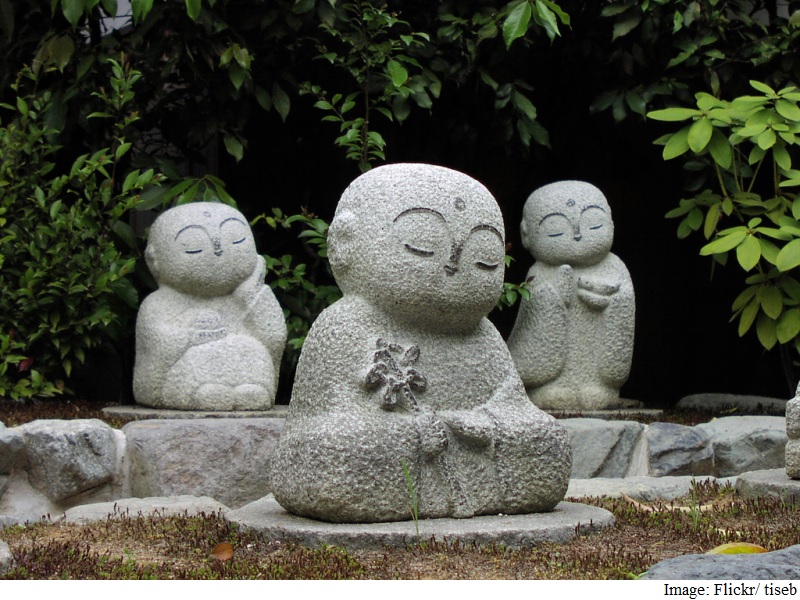
Are you feeling stressed out? Need a way to find inner peace? Or maybe something that can help you to sleep? You’ve probably heard a lot of people telling you about the benefits of meditation, but it’s not something that all of us can do. If you’re able to meditate regularly and feel the benefit, that’s great. For the rest of us, technology can offer a helping hand, and potentially even let you get a better night’s sleep.
In the past, we’ve talked about using an app like Sleep Cycle to help you track your sleep, and to wake up feeling well rested. It works pretty well – but it only deals with the waking up part of the equation. Going to sleep is not any easier, and for many of us, it’s a real issue. That’s where a whole other set of apps comes into the picture. If you’ve ever had trouble sleeping or want a little help meditating to get a little more rest at night, this is what you need: good headphones, and an open mind.
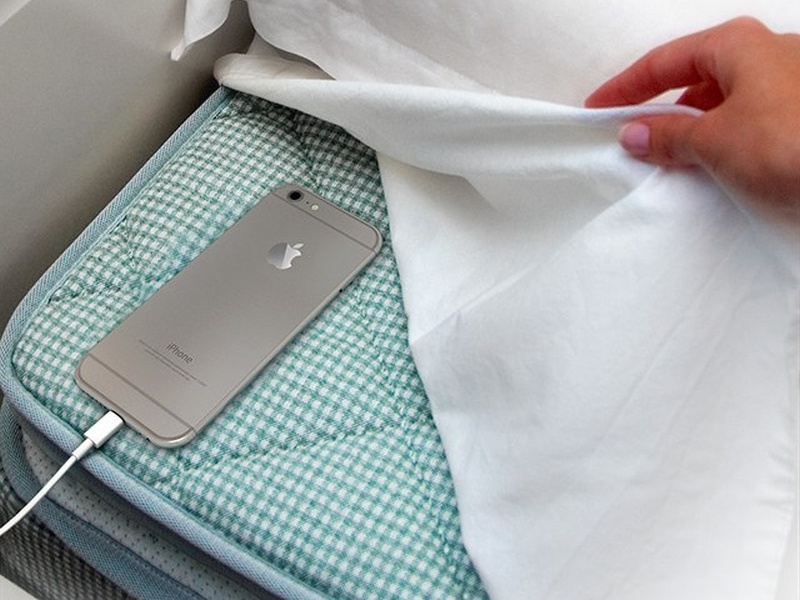 YouTube
YouTube
Everybody knows YouTube, and if you’re sitting on your computer, it’s probably the easiest thing to use for most of us. Once you have a nice pair of in-ear headphones, there are two types of videos that can be of help:
1) ASMR is short for Autonomous Sensory Meridian Response, which is a very scary and technical sounding term for the physical sensation that you can feel on your head, or scalp (or perhaps on the soles of your feet) from audio inputs. The ASMR tingles are usually mildly pleasing, and also relaxing, and there’s a cottage industry of videos now on YouTube that help to stimulate this sensation.
You’ll find videos of people cleaning out ears, or perhaps starting a fire. This virtual barbershop democan also trigger a strong reaction. ASMR is hugely popular, and it’s not actually very clear how or why it happens. Not everyone experiences this at all, and different people find ASMR triggered by different videos. But there’s clearly a growing audience for ASMR videos – a search on YouTube for ASMR brought up nearly 4 million results and there are nearly a million when you search for ASMR sleep. Using these videos helped us to relax a little, and it’s particularly good when you’re lying in bed at night; a video or two running in the background while reading would leave a well-rested feeling. But the problem with ASMR videos is that they don’t work for everyone, and we noticed that the videos become less effective over time – for us anyway – meaning you have to keep finding new videos that suit you.
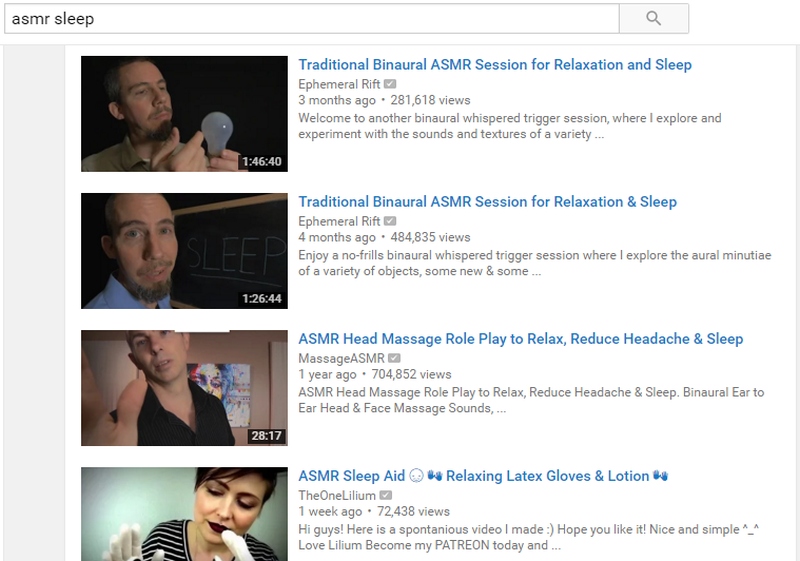 2) While we were reading around ASMR, one term came up quite a few time – binaural beats. Many swore it was a much more reliable and effective way to feel rested. A binaural beat is an auditory illusion that you perceive when two different frequencies (under 1500Hz, with a difference of under-40Hz) are playing in your ears. The difference causes your brain to fill in a pulsing beat between the two ears, so it sounds like you’re listening to a pulsing wave instead of a steady tone in each ear. It sounds strange, but the results are incredibly restful, and we’ve tested this with a number of people now and received positive feedback from nearly everyone.
2) While we were reading around ASMR, one term came up quite a few time – binaural beats. Many swore it was a much more reliable and effective way to feel rested. A binaural beat is an auditory illusion that you perceive when two different frequencies (under 1500Hz, with a difference of under-40Hz) are playing in your ears. The difference causes your brain to fill in a pulsing beat between the two ears, so it sounds like you’re listening to a pulsing wave instead of a steady tone in each ear. It sounds strange, but the results are incredibly restful, and we’ve tested this with a number of people now and received positive feedback from nearly everyone.
There are nearly a million videos that turn up when you search for binaural beat on YouTube. It’s easy to find one, and by and large, we found them all to be pretty good. We didn’t like the videos that come with too many extra bells and whistles – simple, plain sounds worked the best for you. This one is a personal favourite, but if you prefer wind sounds, or gentle music, there is plenty that you can choose from on YouTube.
To listen, don’t turn the volume all the way up on your earphones – the sounds should be loud enough to be heard, but not at a distracting level – this is supposed to be the background sound. It can also be pretty handy to use in the office for this reason – we’ve found it a relaxing way to block out excess chatter at work, while still being present enough that you can hear if your phone rings or if someone is speaking to you.
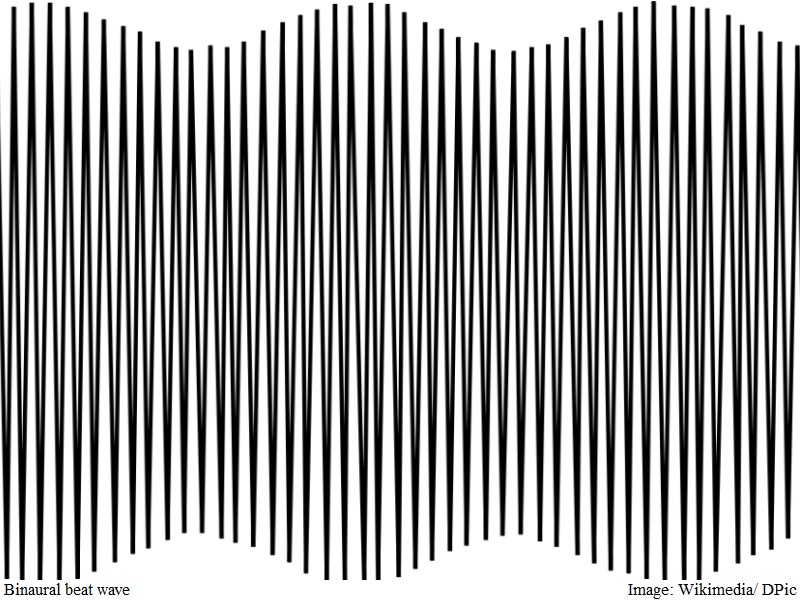 Both these audio aids can be very helpful if you’re trying to relax and feel rested. Many of the people we demonstrated binaural beats to found the experience instantly restful, and said it helped them focus. If you’re sitting in office and having a tiring day, this might just be what you need to get your focus back.
Both these audio aids can be very helpful if you’re trying to relax and feel rested. Many of the people we demonstrated binaural beats to found the experience instantly restful, and said it helped them focus. If you’re sitting in office and having a tiring day, this might just be what you need to get your focus back.
The problem with both of these is, of course, that you’re stuck streaming video from YouTube every time you want to relax or sleep or meditate, and that’s not really ideal. What’s more, you’re wasting bandwidth on video for the ‘relaxing’ visuals that accompany many of these clips – but by and large, most people found the video component quite unnecessary or even a hindrance to relaxing. To get around these problems, you could of course download MP3 files from various sources, but we’d instead recommend getting one of the many apps available.
Mobile apps
The binaural beat generating apps are available on both iOS and Android. The apps are pretty small as well, since they don’t need to store large audio files – they just need to generate fixed tones from your speaker. This means that they’re convenient even on Android phones with relatively limited space on them, and once again, all you really need are a nice pair of in-ear headphones.
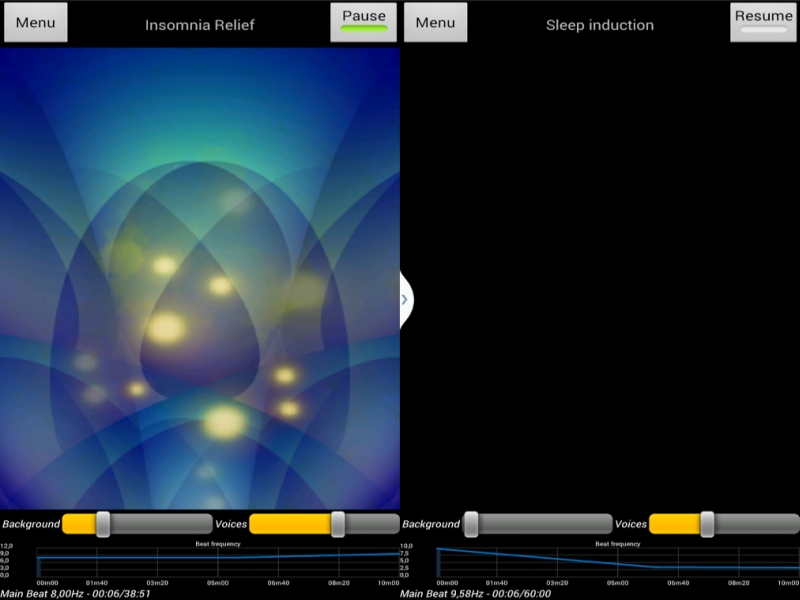 The advantages of using an app are that you’re not reliant on a working Internet connection, and you’ll always have your phone with you, so the sound is always available. This is also convenient to use in bed, and most of the apps we found will run in the background, so you can easily set the up, and then read a book or just turn off the display on your phone and rest for a while.
The advantages of using an app are that you’re not reliant on a working Internet connection, and you’ll always have your phone with you, so the sound is always available. This is also convenient to use in bed, and most of the apps we found will run in the background, so you can easily set the up, and then read a book or just turn off the display on your phone and rest for a while.
On Android, our favourite was an app called Binaural Beats Therapy. It’s free, and comes with a number of different presets that it says can help with various issues – there’s Sleep Induction to help you fall asleep, Power Nap to give you a quick 20 minute rest, even an Acid Trip preset to simulate a dose of LSD. Now, first off, let’s just say that that last one really does not work. Sorry if you got excited. That being said, the Power Nap preset has been super-effective in our (thoroughly unscientific) trials with different volunteers. And it’s become a regular feature on the daily commute as well.
The app includes some video effects, and a few additional sounds over and above the binaural beat you’re listening to which can be a little annoying, but Power Nap doesn’t have this. And it works even with the screen off, so it’s great to slip the phone into your pocket and relax on the way to work.
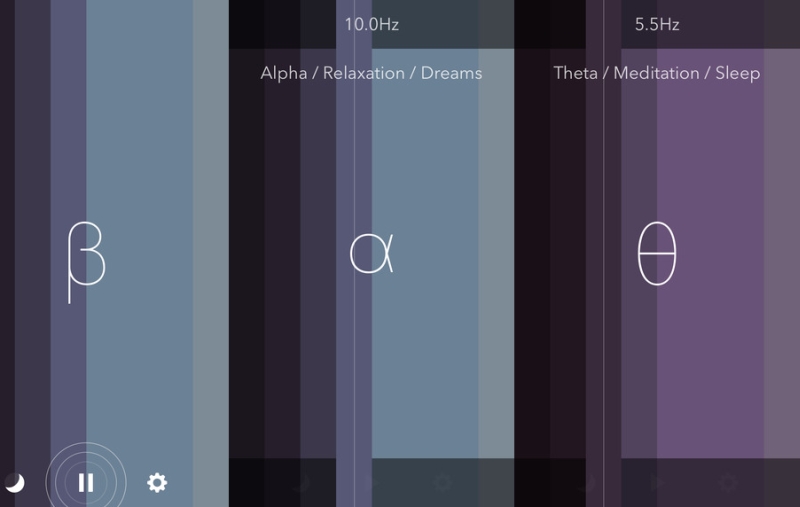 On iOS, Binaural (which was featured in Apple’s Sleep Better collection) is easily the app to pick. It’s also free, though there are some paid features you can unlock for a Rs. 190 in-app purchase. This is not necessary but if you want to support the developer, it’s certainly a good option.
On iOS, Binaural (which was featured in Apple’s Sleep Better collection) is easily the app to pick. It’s also free, though there are some paid features you can unlock for a Rs. 190 in-app purchase. This is not necessary but if you want to support the developer, it’s certainly a good option.
Binaural is a really nice looking and minimal app that lets you easily set the frequency you want to listen to by simply swiping across the screen. It takes seconds to set up, and there’s nothing extra to take you out of the experience – you just listen to the audio that you wanted, and come away feeling rested. From all the basic options we’ve talked about so far, Binaural is definitely our favourite.
VR meditation
All the methods that we’ve talked about so far don’t require anything out of the ordinary – just your phone or computer, an Internet connection, and a good pair of in-ear headphones. But we recently came across one more application that really impressed us, but it has a bit of a barrier to entry. It’s an app for the Samsung Gear VR, which means that you need to have one of Samsung’s high-end phones, and also the Gear VR itself. If you’re an early adopter who’s got both these things though, you can check out an app called Dream. This is a VR experience, in the Oculus Store’s experimental ‘Concepts’ section, and it’s a free app you can try out. The app itself is pretty mesmerising.
 When you strap on the headset and launch the app, you’ll find yourself walking on what looks like a cloud. There’s a slow, smoky waterfall in the distance, and you’ll see little motes of light floating around you gently. This sounds cheesy – and it is – but somehow when you’re strapped into VR, it doesn’t feel stupid, it feels relaxing and almost hypnotic. You’re slowly moving forward in this misty cloud, with the mores of light swirling around you, and a gentle wind-sound plays, on top of a binaural beat. That’s all there is to dreams – it’s a very simple, and relaxing experience, which manages to make good use of the visuals as well – a first, in our opinion.
When you strap on the headset and launch the app, you’ll find yourself walking on what looks like a cloud. There’s a slow, smoky waterfall in the distance, and you’ll see little motes of light floating around you gently. This sounds cheesy – and it is – but somehow when you’re strapped into VR, it doesn’t feel stupid, it feels relaxing and almost hypnotic. You’re slowly moving forward in this misty cloud, with the mores of light swirling around you, and a gentle wind-sound plays, on top of a binaural beat. That’s all there is to dreams – it’s a very simple, and relaxing experience, which manages to make good use of the visuals as well – a first, in our opinion.
After the first five to ten minutes, we stopped looking around, and just sat down and enjoyed the gentle ride we were on. It felt almost like being on a boat, gently being rocked to sleep, and while it would be a bad idea to go to sleep with a VR headset strapped to your face, it was pretty tempting. We didn’t really want to remove the headset, but after 30 minutes we started to feel quite sleepy, and had to pull it off.
Overall, Dreams was simply the best and most relaxing app we’ve experienced so far, and if you’re able to try it out for yourself, we’d strongly recommend it. This might not help everyone, but the few people we tried this with had a similar experience, and it really shows how VR could have a number of uses outside of gaming, as it could help people to rest, sleep, or meditate.
Download the Gadgets 360 app for Android and iOS to stay up to date with the latest tech news, product reviews, and exclusive deals on the popular mobiles.




